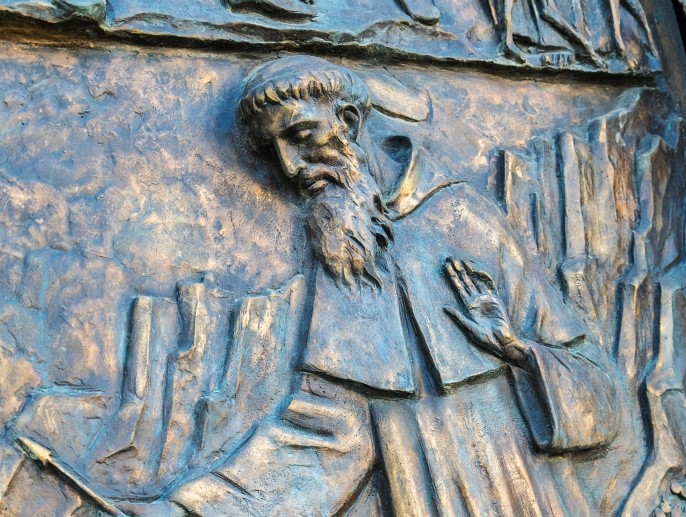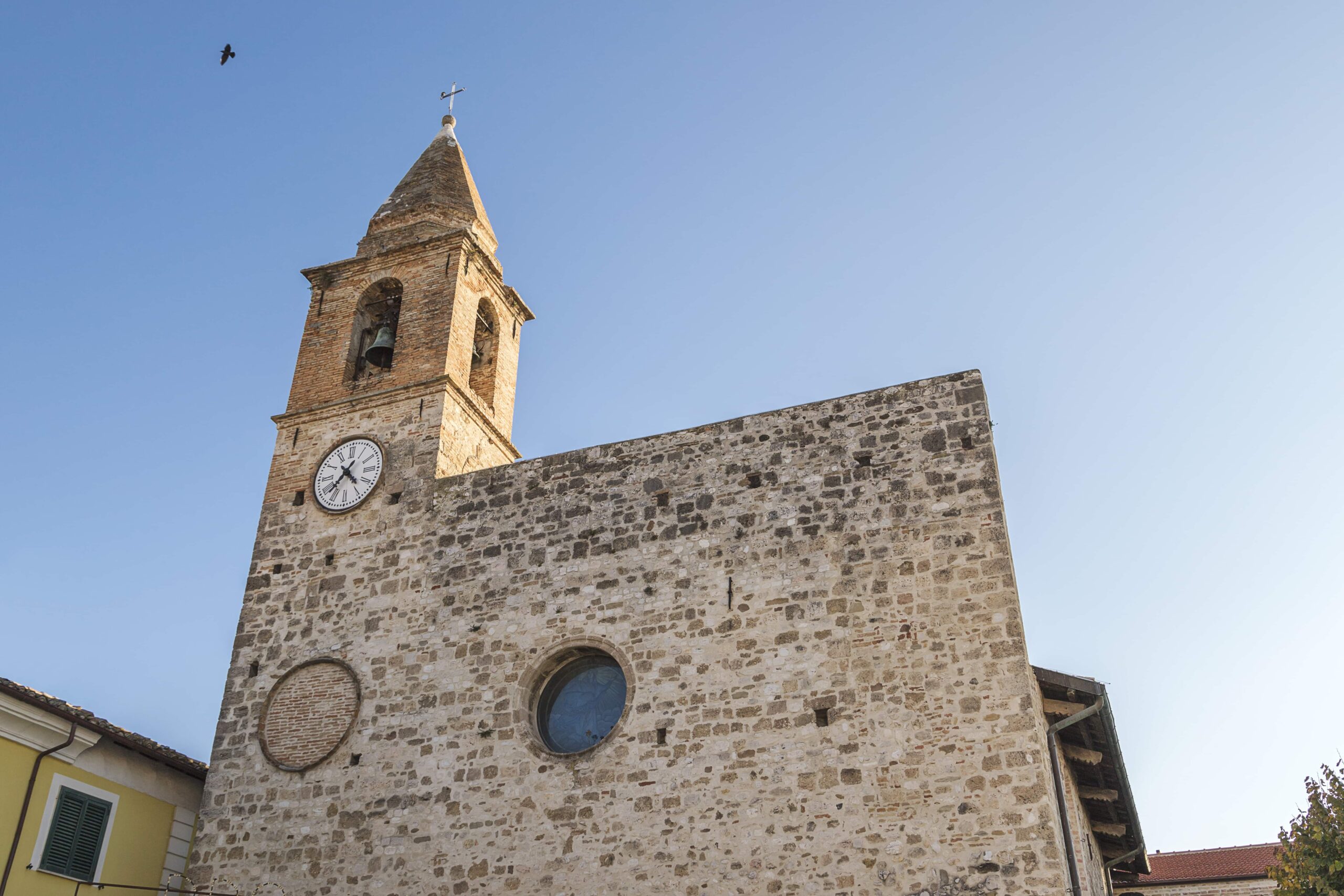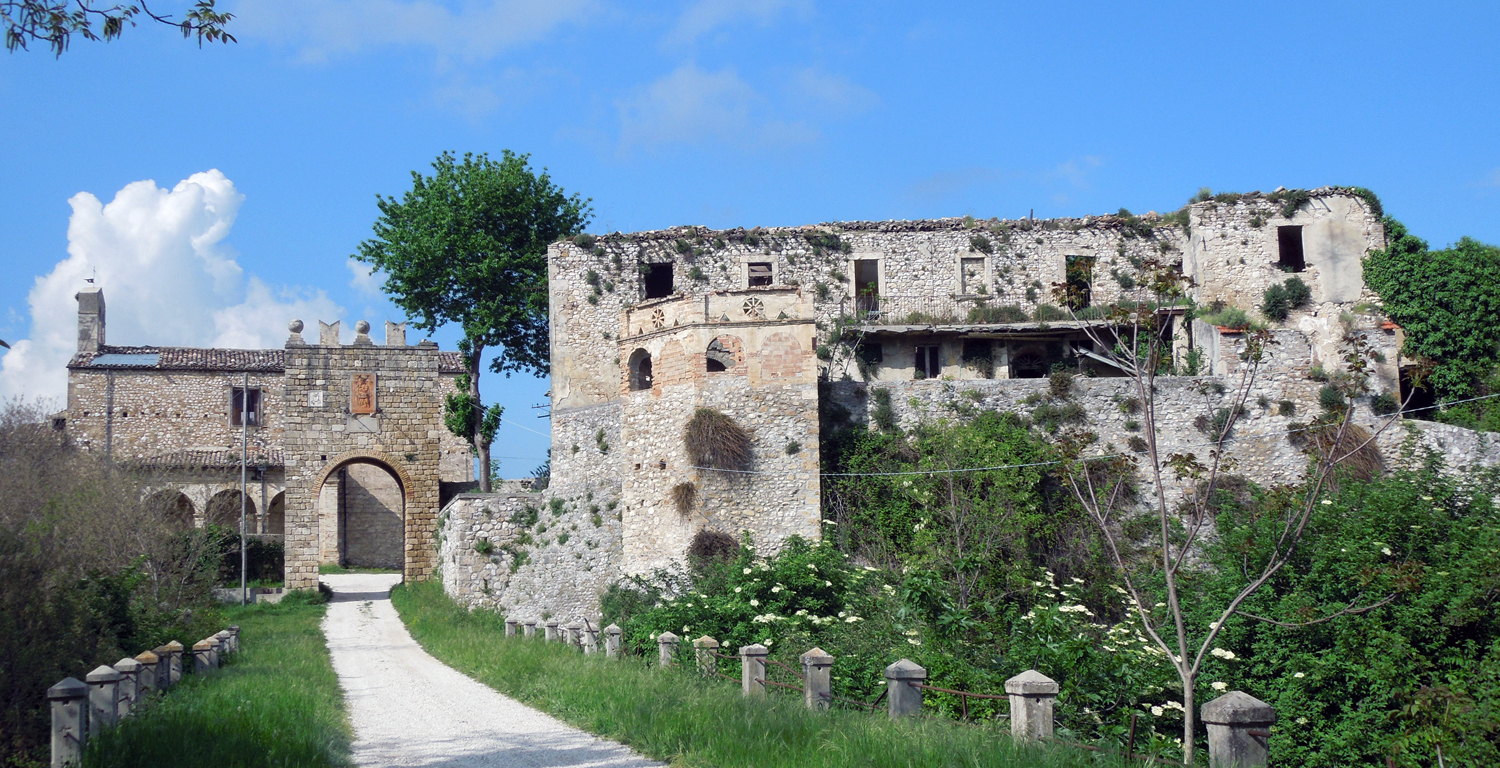A walk through the historic centre will give you a feeling of closeness with a past so distant but still so present in the territorial memory.
The 12th-century Romanesque Church of Sant’Egidio Abate was built as a monastic priory of the Benedictine Abbey of Monte Santo on a pre-existing 8th-century church. The structure, remodelled over time with Gothic decorations, has three naves with a round apse and features single-light windows with stone archivolt in a single block, typical elements of Abruzzese architecture. The trusses date back to the 15th century, while the façade was rebuilt in 1524 and the bell tower erected in 1555.
Moving from ancient to modern, the Church of the Sacred Heart of Jesus, designed in 1948 by architect Dante Tassotti, is worth a visit. The building consists of a central cylindrical body in red brick and a portico preceding the three bronze entrance portals, on whose doors are bas-relief figures of Christian iconographic scenes. On the rear right-hand side is a bell tower with a square base ending in a spire.
We therefore suggest that you reach Faraone antico, a small village of Lombard origins, feud of several noble families, including that of the Ranalli barons. This hamlet, now uninhabited and with its walls overgrown with vegetation, still shows its architectural uniqueness: the ancient gateway retains a glorious beauty, letting you imagine the sounds and scenes of daily life that once animated the village.
If you are at lunchtime or dinnertime, you can savour the handmade salami, typical of this territory and fruit of the ancient art of pork processing that Sant’Egidio can still boast. In particular, the ‘ventricina teramana’, prepared by finely mincing pork meat and lard with sweet Cervia salt and aromatic herbs; the cured meat is then stuffed into the pig’s stomach or packaged in jars, to be spread on bread. Also try the pallotte cace e ove, meatballs made with egg, cheese and breadcrumbs, cooked in a sauce that absorbs their aromas and flavours. Unique.










